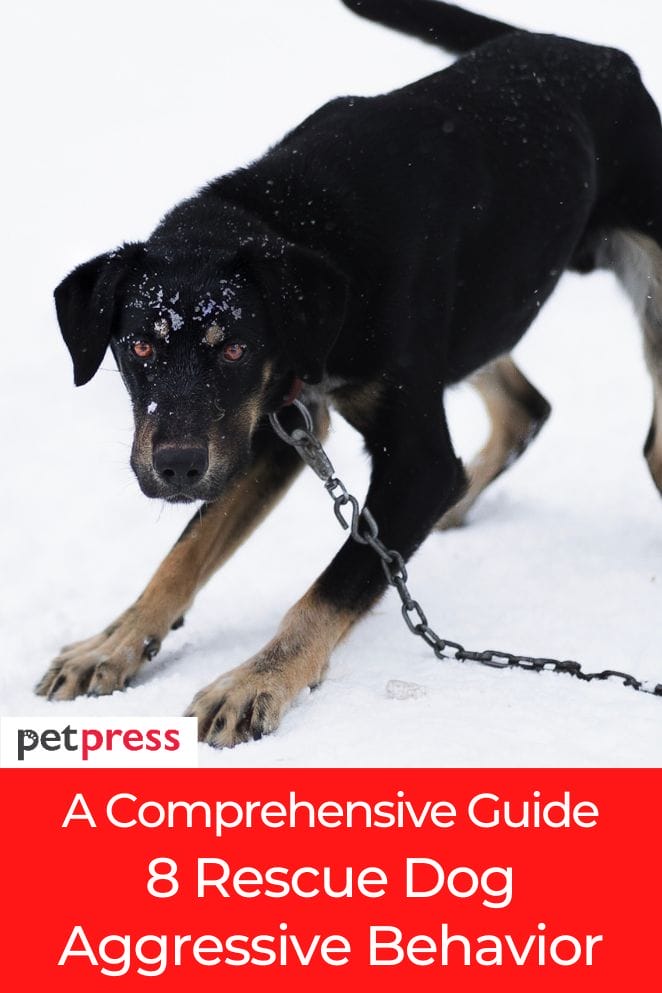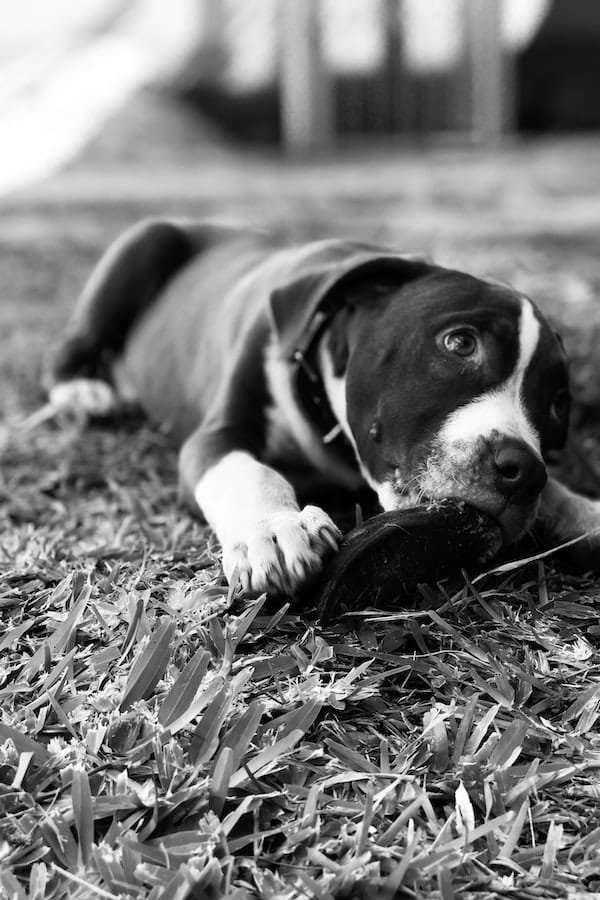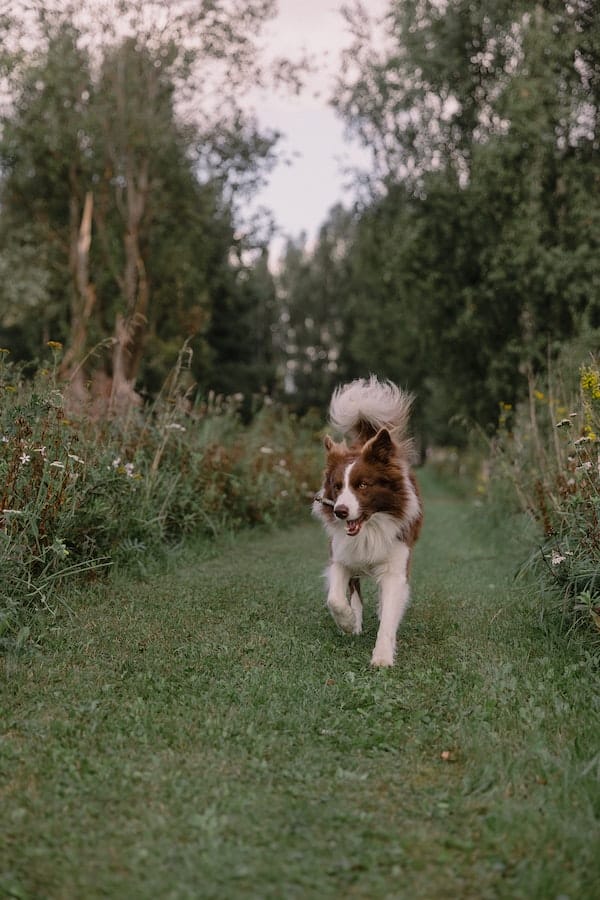
Introducing a rescue dog into your life can be an incredibly fulfilling experience, but it often brings along its unique set of hurdles.
One prevalent challenge many rescue dog owners face is dealing with aggressive behavior in their new furry family members.
In this article, we’ll delve into the reasons behind the aggression exhibited by some rescue dogs, outline the typical forms of aggressive behavior you might encounter, help you discern whether your rescue dog is indeed displaying aggression, and provide invaluable insights on how to effectively address and navigate this complex issue.
So, let’s embark on a journey of understanding and nurturing your rescue dog’s behavior together!
Why Do Rescue Dogs Become Aggressive?
Rescue dogs can display aggressive behavior for a variety of reasons, and understanding these underlying factors is crucial to addressing and mitigating their aggression.
Here are some additional insights into why rescue dogs may become aggressive:
Fear and anxiety
Fear and anxiety are common underlying reasons for aggression in many rescue dogs.
These dogs have often endured distressing experiences in their past, including abuse or neglect.
These traumatic events can leave deep-seated scars of fear and anxiety.
When they perceive a threat or feel trapped, their fear can manifest as aggression—a defensive measure to protect themselves.
Lack of socialization
Some rescue dogs may not have had the opportunity for proper socialization during their early developmental stages.
This lack of exposure to various people, animals, and environments can result in heightened anxiety or reactivity when faced with new situations or unfamiliar dogs.
Territorial behavior
A rescue dog may develop territorial behavior as a result of previous experiences of scarcity or competition for resources.
This territorial aggression can manifest when they feel the need to guard their newfound home, food, toys, or even their owners.
Medical Issues
Underlying medical conditions can also contribute to aggressive behavior in rescue dogs.
Pain or discomfort caused by health problems may cause them to react aggressively when touched or handled.
It’s important to rule out any medical issues through a thorough veterinary examination.

Lack of training and boundaries
Some rescue dogs may not have received consistent training or clear boundaries in their previous homes.
This can result in behavioral issues, including aggression, as they may not understand appropriate behavior or may have learned that aggression gets them what they want.
Stress and adjustment period
The transition from a shelter or previous home to a new environment can be highly stressful for rescue dogs.
This adjustment period may trigger anxiety and insecurity, which can manifest as aggression as they attempt to cope with their new surroundings.
Genetic factors
Genetics also play a role in a dog’s behavior, alongside environmental factors.
Some breeds may have a genetic inclination toward specific types of aggression.
Understanding the breed or mix of your rescue dog can offer valuable insights into potential genetic factors contributing to their behavior.
Lack of trust
Building trust is essential for rescue dogs. Some may have difficulty trusting humans due to past mistreatment.
Gaining their trust through patience, consistency, and positive interactions is crucial in reducing aggressive tendencies.
Emotional trauma
Emotional trauma, such as the loss of a previous owner or being abandoned, is another significant factor in aggressive behavior.
Dogs that have endured such emotional upheaval may struggle to form new bonds and may resort to acting out as a response to the turmoil they’ve experienced.
Common Types of Rescue Dog Aggressive Behavior:

Understanding the various types of aggressive behavior in rescue dogs is crucial for effective management and behavior modification.
Let’s delve deeper into these common types of rescue dog aggressive behavior:
Fear aggression
Fear aggression stands out as one of the most frequently encountered forms of aggression in rescue dogs.
It typically arises when a dog perceives a threat or finds itself in a corner, prompting an aggressive response as a defense mechanism.
Observable signs of fear aggression encompass growling, barking, lunging, or even resorting to biting when the dog feels frightened or anxious.
Territorial aggression
Dogs are naturally territorial animals, and some rescue dogs may exhibit territorial aggression. They may become protective of their home or personal space, reacting aggressively towards intruders or perceived threats. This behavior can be triggered by unfamiliar people or animals entering their territory.
Resource guarding
Resource guarding is when a dog displays aggression to protect valuable resources such as food, toys, or even a favorite spot.
Rescue dogs with a history of scarcity or competition may be more prone to resource guarding.
Signs can include growling, snapping, or biting when someone approaches their possessions.
Dog-to-dog aggression
Dog-to-dog aggression, another common type, often surfaces when rescue dogs display aggression towards other canines, especially if they’ve had prior negative interactions or traumatic experiences.
Managing this type of aggression can be a challenge, usually requiring meticulous socialization efforts and specialized behavior modification techniques.
Redirected aggression
In situations marked by high-stress levels, redirected aggression may rear its head.
This phenomenon transpires when a rescue dog, unable to direct their aggression toward the primary source of stress, redirects it onto a nearby person, animal, or object.
It’s vital to exercise caution and refrain from intervening in such instances, as interference can potentially exacerbate the aggression.
Predatory aggression
Predatory aggression is driven by a dog’s natural hunting instincts.
Some rescue dogs may display this behavior, especially towards smaller animals.
They may chase, snap, or even harm smaller creatures. It’s essential to manage this aggression carefully to prevent harm to other animals.
Intermittent aggression
Some rescue dogs may display intermittent or unpredictable aggression, which can be particularly challenging to address.
This type of aggression may not have an obvious trigger and can occur seemingly out of the blue.
Identifying patterns and triggers, if any, is essential in managing intermittent aggression.
Maternal aggression
Female rescue dogs that have recently had puppies may exhibit maternal aggression when they feel their offspring are threatened.
This type of aggression is protective in nature and typically resolves once the puppies are weaned and independent.

How to Tell If Your Rescue Dog Is Aggressive?
Identifying aggression in your rescue dog requires careful observation of their behavior and understanding the signs that may indicate aggression.
Here are some key indicators to watch for:
Growling or snapping
Aggressive dogs often use vocalizations like growling as a warning sign. If your dog growls when approached, it can be an indication of aggression.
In more severe cases, they may snap or bare their teeth as a defensive or offensive response.
Body language
Pay close attention to your dog’s body language.
Aggressive dogs may exhibit a stiff or rigid body posture, raised hackles (the hair along their back), and a fixed or intense gaze.
These physical signs can signal discomfort, fear, or aggression.
Lunging or biting
Aggressive behavior can escalate to physical actions such as lunging toward perceived threats or even resorting to biting.
If your dog displays aggressive lunging or attempts to bite, it’s a clear sign of aggression that requires immediate attention.
What to Do If Your Rescue Dog Is Aggressive?
Addressing aggression in a rescue dog is a complex and delicate process that requires careful handling and professional guidance.
Here are detailed steps to take if your rescue dog displays aggression:
Consult a trainer or behaviorist
Seek the expertise of a qualified dog trainer or behaviorist who specializes in aggression issues.
They can assess your dog’s behavior, identify the underlying causes, and develop a tailored behavior modification plan.
Professional guidance is crucial for safely and effectively addressing aggression.
Positive reinforcement techniques
Use positive reinforcement training techniques to encourage good behavior.
Reward your dog with treats, praise, and affection when they exhibit non-aggressive behaviors.
Positive reinforcement can help reshape their responses to triggers and build trust.
Desensitization and counterconditioning
Work with a trainer to desensitize your dog to their triggers gradually.
This involves exposing your dog to the trigger in a controlled and safe environment while using positive reinforcement to create positive associations.
Over time, this can reduce their reactivity.

Create a safe environment
Manage your dog’s environment to minimize opportunities for aggression.
This may include using baby gates, crates, or leashes to control their access to certain areas or situations.
Safety precautions are essential to prevent aggressive outbursts.
Avoid punishment
Avoid using punishment-based training methods, as these can exacerbate aggression and erode trust between you and your dog.
Focus on positive reinforcement and reward-based training to encourage desired behaviors.
Regular exercise and mental stimulation
Ensure your dog receives adequate physical exercise and mental stimulation.
A tired dog is less likely to exhibit aggressive behaviors, so daily walks, playtime, and interactive toys are essential.
Consult a veterinarian
Don’t forget to consult a veterinarian as a crucial step in this process.
It’s essential to have your rescue dog undergo a thorough examination by a qualified veterinarian.
This thorough check-up aims to rule out any potential underlying medical issues that might be contributing to their aggression.
Remember, pain or discomfort can sometimes trigger aggressive behavior, underscoring the significance of addressing any medical concerns as a top priority.
Conclusion
It’s important to recognize that rescue dogs, despite exhibiting aggressive behavior, can flourish with the right care and attention.
By delving into the root causes of aggression, understanding its various types, and seeking professional guidance, you can play a pivotal role in helping your rescue dog overcome their challenges and ultimately cultivate a trusting and loving relationship.
FAQs
With proper training and patience, many rescue dogs can improve their behavior, but individual results may vary.
It can be safe with the right training and management but consult with a professional before adopting to ensure a suitable match.
Aggression can be seen in any breed, but some rescue dogs may have predispositions due to their backgrounds.
The timeline varies based on the dog’s history and the effectiveness of training, but consistency is key.
While complete elimination is not guaranteed, significant improvement and management are achievable with the right approach.


GIPHY App Key not set. Please check settings